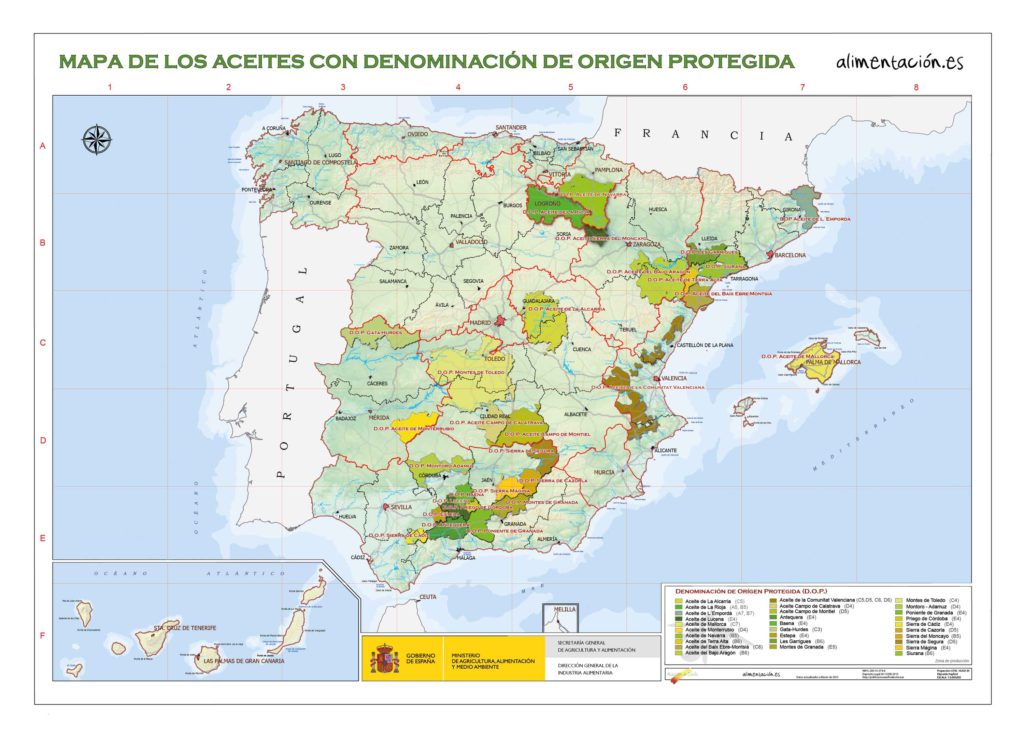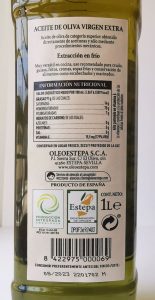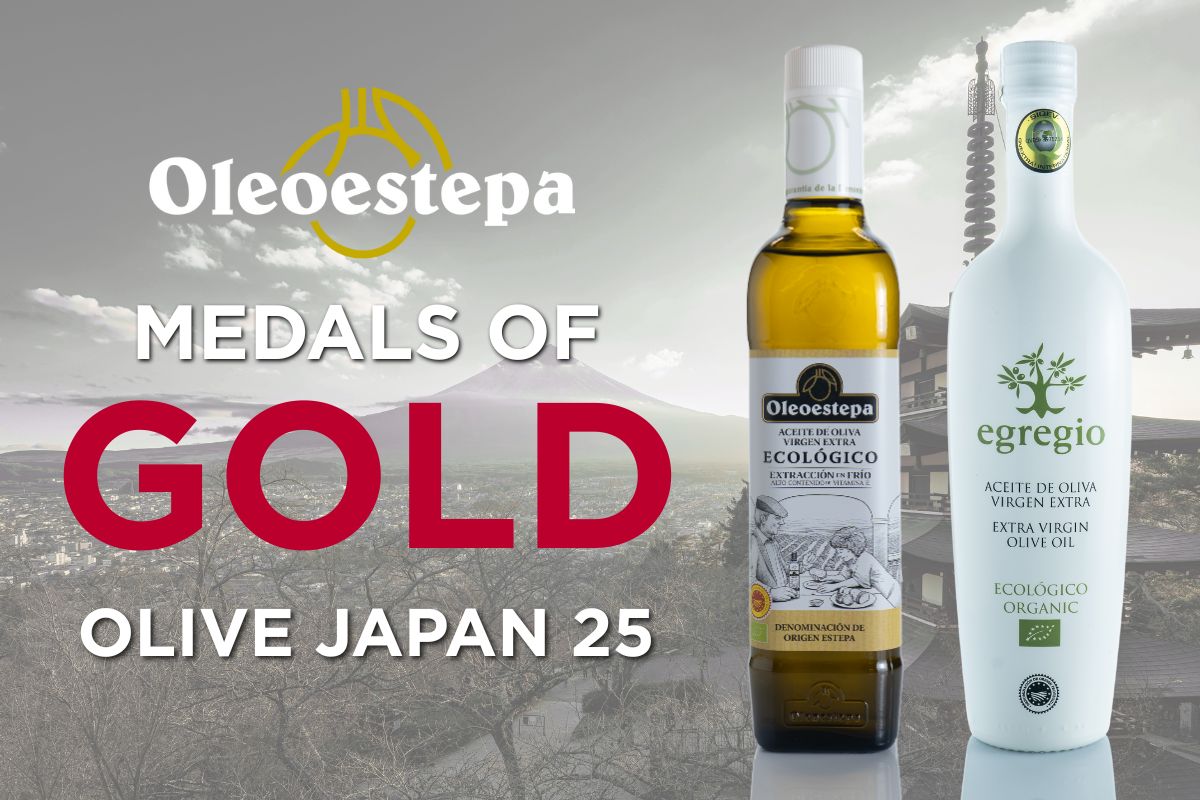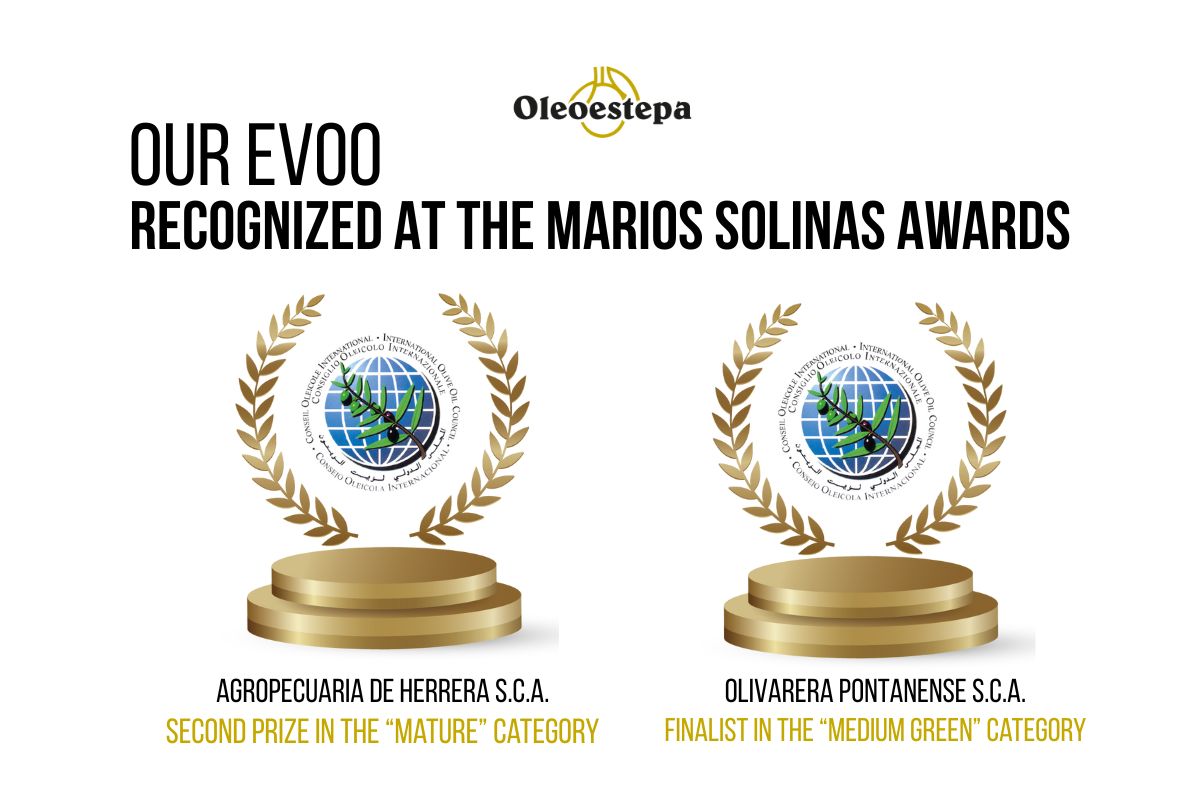What is a Protected Designation of Origin for olive oil?
Before explaining what a Protected Designation of Origin is, we must explain its origin and the reason for its existence. In the European Union there is a great wealth and variety of food products. When a product acquires a certain reputation, it may be subject to usurpations and imitations. This unfair competition not only has a negative impact on producers but also on consumers in the form of fraud.
For this reason, quality regimes known as PDO, PGI and TSG (Protected Designation of Origin, Protected Geographical Indication and Traditional Specialty Guaranteed) exist to protect agricultural products and foodstuffs.
The PDO/PGI regime helps producers of products linked to a geographical area in three different ways. First, it ensures fair remuneration for the qualities of their products. Secondly, it guarantees the names of these products, as intellectual property rights, uniform protection throughout the European Union. And finally, it provides consumers with clear information on the properties that give added value to these products.
In short, these designations cover products that are protected by European Union regulations that guarantee compliance with higher requirements than those demanded for other products.
The Protected Designation of Origin (PDO) is the name of a district or region, a specific place and sometimes even a country, with which an agri-food product is designated and which must meet the following requirements:
– To be originating from that territory, both the production of its raw material and its production or transformation.
– To have a quality or characteristics that are fundamentally or exclusively due to the geographical environment with its natural and human factors.
– A public entity regulates and monitors compliance with the standards.
Are there other quality seals recognized by the EU ?
In addition to the Protected Designation of Origin (PDO), the European Union recognizes two other quality seals with these peculiarities.
Products with a Protected Geographical Indication (PGI) have a specific quality that can be attributed to a geographical origin and whose production or processing is carried out in the defined geographical area from which it takes its name.
Traditional Specialties Guaranteed (TSG) are products with specific features that differentiate them from other foods in the same category, and are produced from traditional raw materials, or have a traditional composition, production method or processing.
What legal rights do these quality seals have?
As they are registered by the European Union, both the Protected Designation of Origin and the Protected Geographical Indication have the following Intellectual Property rights against:
Any direct or indirect commercial use of a registered name on products not covered by the registration, when such products are comparable to products registered under that name or when the use of the name takes advantage of the reputation of the protected name, even when such products are used as ingredients.
Any misuse, imitation or evocation, even if the true origin of the products or services is indicated or if the protected name is translated or accompanied by expressions such as “style”, “type”, “method”, “produced as in”, “imitation” or similar expressions; even when such products are used as ingredients.
Any other type of false or misleading indication as to the provenance, origin, nature or essential characteristics of the products, used on the container or packaging, in advertising or in documents relating to the products in question, as well as the use of containers which by their characteristics may create an erroneous impression as to their origin.
Any other practice that may mislead the consumer as to the true origin of the product.
In the case of the Traditional Specialty Guaranteed seal, although it does not enjoy Intellectual Property rights, they are protected against any improper use, imitation or evocation and against any other practice that may mislead the consumer.
How are these seals recognized?
The labeling of certified agri-food products may include the symbol of the European Union associated with it next to the registered name of the product, and must appear in the same visual field.
The terms “Protected Designation of Origin”, “Protected Geographical Indication” or “Traditional Speciality Guaranteed”, or the corresponding abbreviations “PDO”, “PGI” or “TSG” may appear on the labeling of agri-food products.
What are the differences between a PDO and a PGI?
There are two fundamental differences:
– In a PDO product all the production stages are carried out in the defined geographical area, whereas in a PGI product only one of the stages needs to be carried out in the same geographical area.
– In a PDO product the link between the characteristics of the product and the geographical area in which it is produced is stronger than in a PGI product, since the characteristics of the PDO product are fundamentally or exclusively due to the geographical area, whereas in a PGI product only one quality, reputation or characteristic needs to be due to the geographical area.
For example, the entire process of elaboration of the extra virgin olive oil of the Denomination of Origin Estepa is carried out in this region, from the collection of the olives from its olive groves through its milling and packaging. In the case of the Protected Geographical Indication Mantecados de Estepa, the production of the mantecado is regulated, indicating the geographical area and the quantities to be used, although it is not obligatory for the ingredients to be grown and processed in the producing area.
What are the differences between a PDO or PGI and a TSG?
There are three fundamental differences between a PDO/PGI and a TSG:
– A PDO/PGI protects a name that identifies a product originating from a specific place, while a TSG protects production methods and traditional recipes.
– In a PDO/PGI product, the specificity is due to the origin of the product, while in a TSG it is due to the traditional character.
– PDOs/PGIs constitute a right to intellectual property, while TSGs do not grant a right to intellectual property but the right to incorporate the indication “Traditional Specialty Guaranteed” on the label of the product.
Is a Denomination of Origin (DO) the same as a Protected Designation of Origin (PDO)?
Yes, it is. Before Spain joined the European Union, there was only the term “Denomination of Origin”. However, since 2009 the term “Denomination of Origin” can no longer be used, but only “Protected Designation of Origin”. It is the Order of January 25, 1994 of the Ministry of Agriculture, Fisheries and Food, which specifies the correspondence between Spanish and Community legislation in this matter, establishing the equivalence between “Denomination of Origin” and “Protected Designation of Origin”.
How many Protected Designations of Origin are there in Spain?
In Spain there are 68 PDOs for wine and 66 other figures of differentiated quality for other types of this product, 21 designations of origin for fresh meats, 8 for hams, 9 for sausages, 29 for cheeses, 7 for honey, 2 for butter, 19 for fruits and 24 for vegetables. Spain has 29 designations of origin for extra virgin olive oil and one Protected Geographical Indication, Aceites de Jaén. In Andalusia there are 12 protected designations of origin for extra virgin olive oil.
In the case of extra virgin olive oil, each Designation of Origin differs from the others by its geographical area, the varieties of olives used to produce its oils and its sensory characteristics.
A Protected Designation of Origin has many characteristics similar to a Protected Geographical Indication, such as the fact that they are related to a specific place and that there is a link with it. But they differ in that in a PDO product all the production phases are carried out in the defined geographical area, while in a PGI only one phase is required, and that a PDO product has a stronger link between the characteristics of the product and the geographical area in which it is produced than a PGI product.
In short, a Protected Designation of Origin is the strongest proof of the quality of a product and its link to a territory, in which, as in the case of the region of Estepa, EVOO is more than a product, it is a way of life for more than 7000 families who live there and an industrial and business fabric that supports and develops it.

What is the Protected Designation of Origin that covers Oleoestepa oils?
The Denomination of Origin Estepa certifies unique extra virgin olive oils. The territory, the climate, the way we take care of our olive trees and the way we elaborate our oils have made our “olive juice” to be recognized worldwide.
Its functions are to control and guarantee the quality of the extra virgin olive oils produced in its territory and to promote them nationally and internationally through numerous initiatives.
The Regulatory Council establishes in its Regulations the most demanding quality standard to protect extra virgin olive oils, supported especially in the sensory analysis, guaranteeing this high quality until the date of preferential consumption.
The notoriety achieved by the Region of Estepa and Puente Genil is thanks to the combination of factors such as the varieties of olive trees, climate, soil and know-how of its people, which make their extra virgin olive oils unique, and therefore since 2004 they have the Recognition and Protection of the National and Community authorities through the Protected Designation of Origin Estepa.
How can I identify if an olive oil has a Protected Designation of Origin?
It is very easy to identify a PDO on the packaging, since the product normally has a numbered back label where the denomination of origin to which it belongs is perfectly described. This numbered back label is granted by the Regulatory Council, the body that manages a PDO, to the products of the brands that have successfully passed all the quality controls.
In the example of the image we see a back label of an extra virgin olive oil of Oleoestepa, brand protected by the Denomination of Origin Estepa, where you can see perfectly the seal of the PDO Estepa and its corresponding numbering.





